Sock Knitting
I take months (and sometimes years) to knit even basic socks by hand. Still, I love wearing hand knit socks. I started looking into circular sock knitting machines last year after looking at flat bed knitting machines. Due to affordability, availability, and liking the idea of 3D printed replaceable parts, I decided to order Dean and Bean’s Sock Machine – Kitchen Sink package (2.0 version).
When I ordered, the waiting list was around 7 months long. I was expecting to receive it in December 2022, but was happily surprised by it a few months early! Unfortunately, this didn’t heavily affect when I ended up setting up the machine, since I had set aside time in December, but not before, to set up and learn the machine.
Dean and Bean’s Sock Machine Setup



Once I sorted through all of the items included in the Kitchen Sink bundle, basic setup was pretty straight forward. Inserting all the needles was slightly tedious, but not bad.
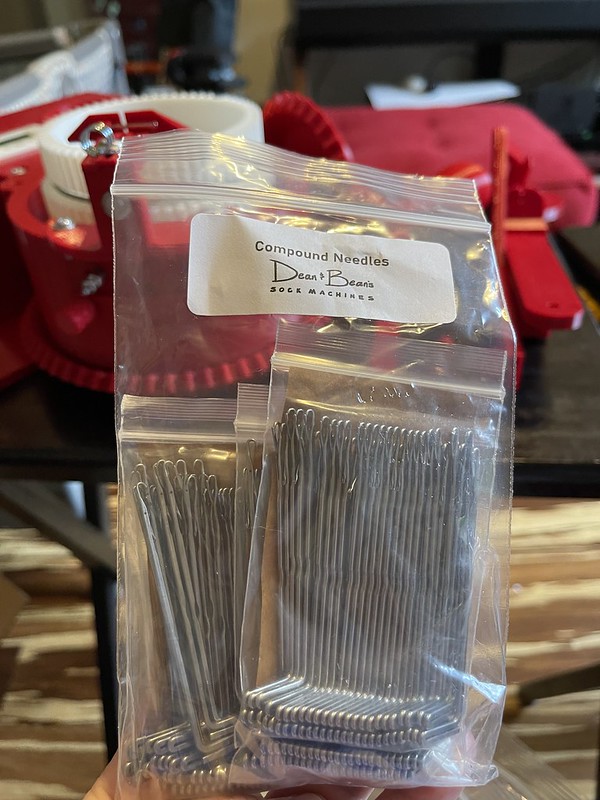
The most ideal workspace is a sturdy square or rectangular (not round or oval) table that allows you to set up your machine on one corner. You probably want it to be big enough to hold your machine, project and waste yarn, soft weights, heel forks, and pattern. The table we use has a 24 x 27 inch surface.
Dean and Bean’s work area setup recommendations
So far, I have gotten away with having the sock machine attached to a TV tray (approximately 15 inches deep by 19 inches wide), so a setup doesn’t have to take up too much space, even if you want to set it up to be permanent or semi-permanent.
Overall, I happy with what I have tried out so far of the Dean and Bean product. I love that the Kitchen Sink bundle comes with all of the tools I need (including a latch hook, weighted heel forks, setup bonnets, etc.) to jump into using a circular sock-knitting machine without feeling like I am “making do”. However, I did have an issue with the 60 needle cylinder where the needles kept catching in one area on plastic filament that was coming loose / had printed in an unintentionally pooled way. I was able to rectify with some small files that I have, but quality control of this type could impact people who don’t have relevant tools at home. (Thin plastic “fly aways” aren’t a problem, but the larger filament pooling in the needle channel caused some issues for me.)

CSM Socks
I haven’t thoroughly documented all of the pairs of socks I have made, but I know I have made 10+ pairs. While I have made basic cuff down and toe up socks (with both short row and 3 wedge heels), I prefer cuff down construction. For me, grafting the toe area together is faster/easier than trying to manually cast off the cuff on the knitting machine.


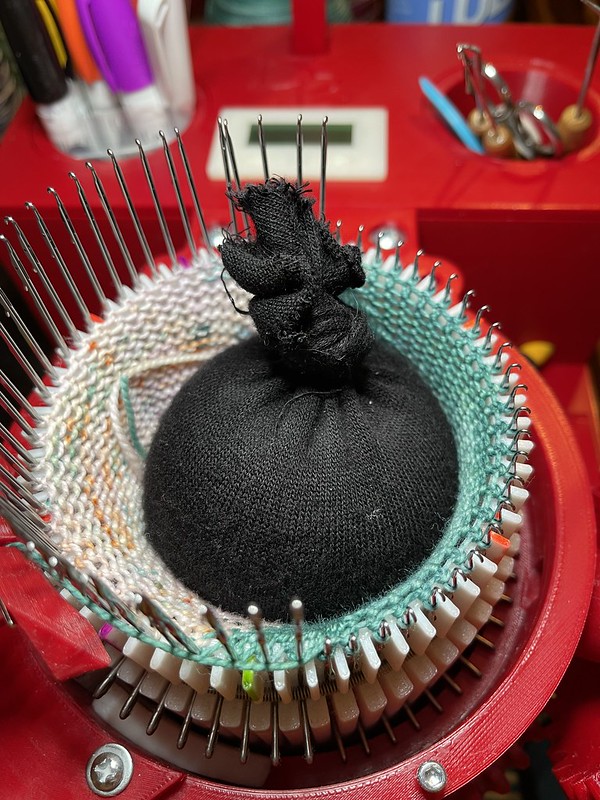
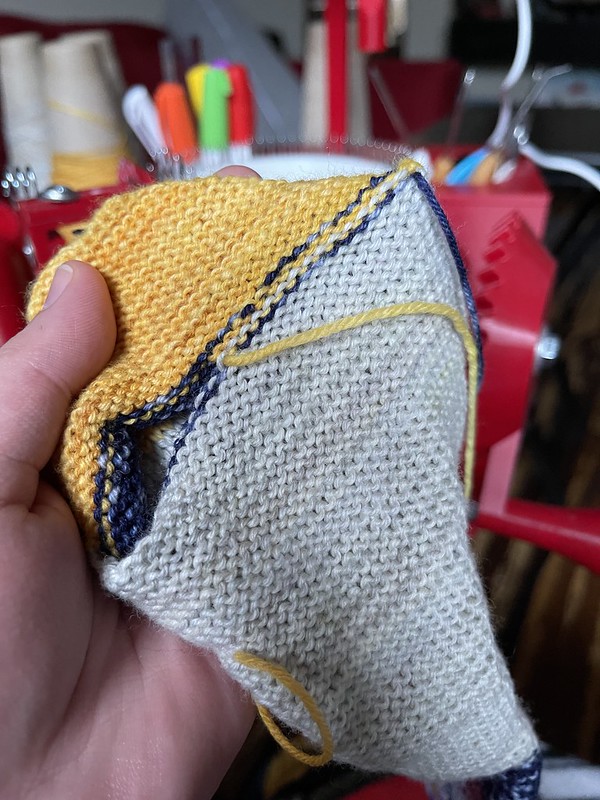
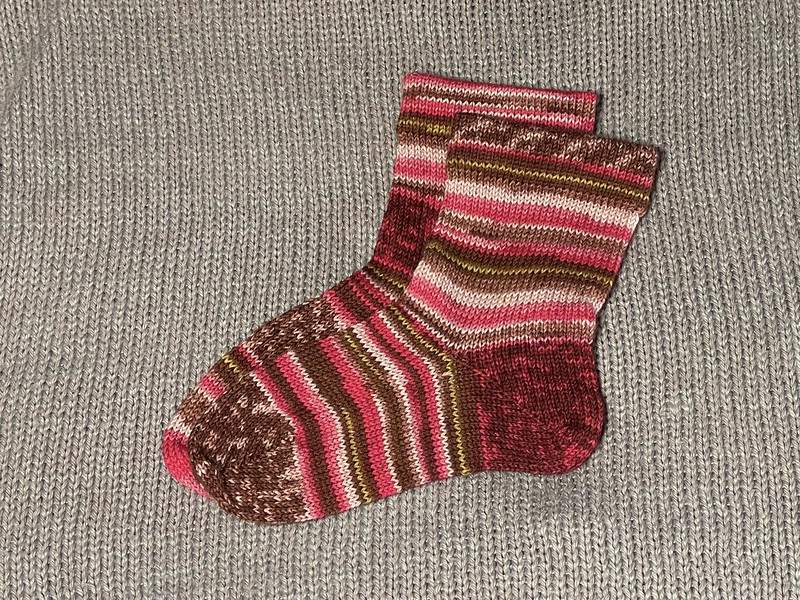
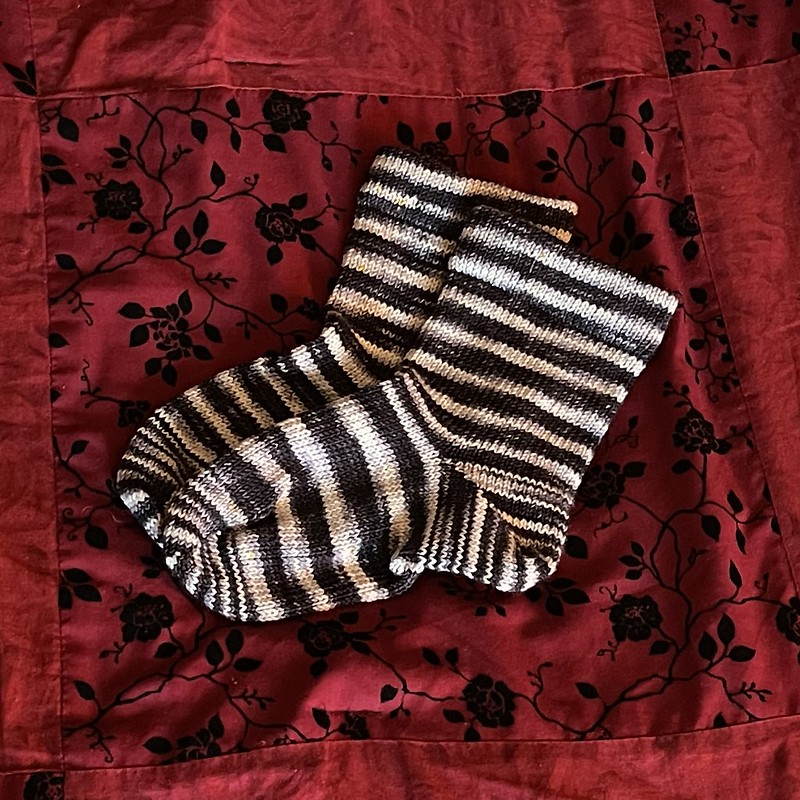
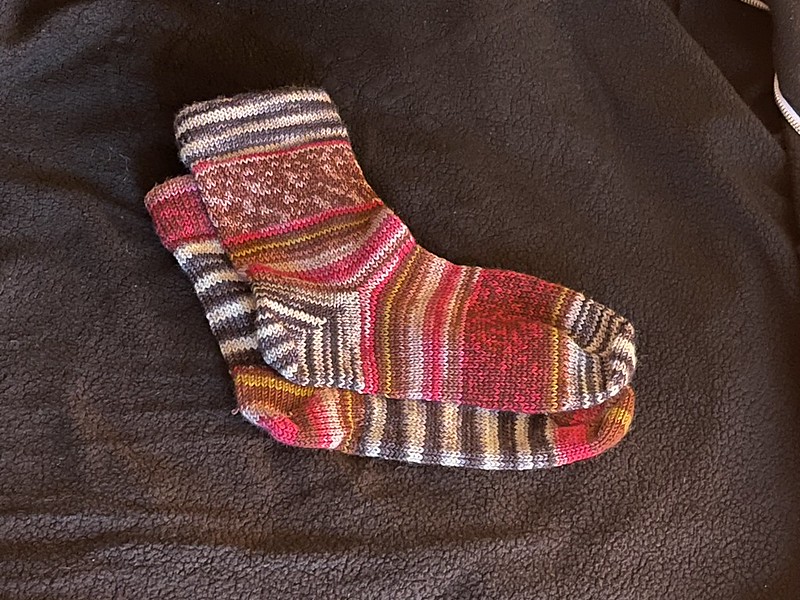

What’s Next? Ribbing
The Kitchen Sink bundle came with ribber options, but have been too intimidated to try them out yet! I do think long-term I would like to make socks with a ribbed cuff.

Work within Your Limits
I am able to “crank” about 1 sock every 2ish hours on the CSM. I could potentially go faster, but even at this pace, when I try to knit too many in a row, I end up with a very sore arm. Last time I cranked 3 pairs of socks (1 pair per day, 3 days in a row), I had enough pain that I was having difficulty sleeping, and ended up web searching my symptoms. My symptoms were indicative of repetitive strain injury, so I am dialing back my sock cranking to 1 pair per week max for now!